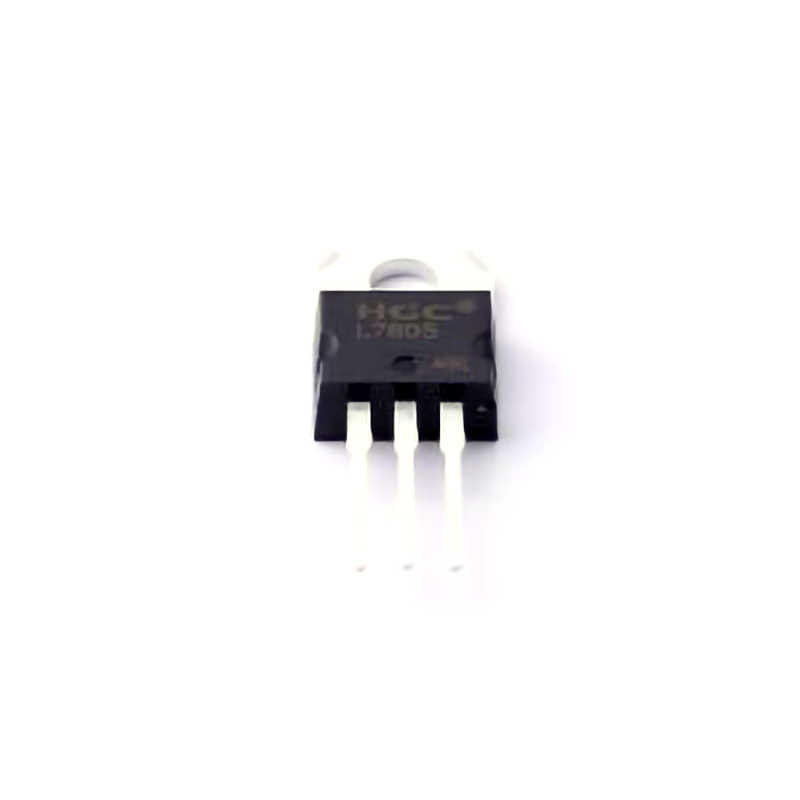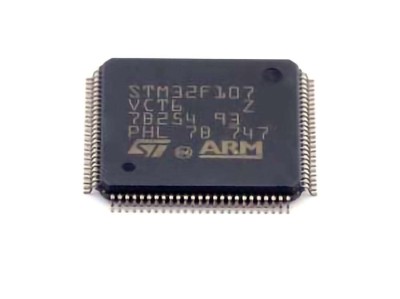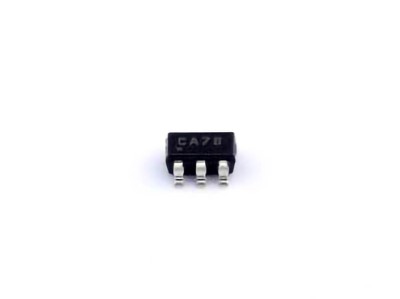
The JSMS EMI L7805CV is one of the most popular voltage regulator ICs used in Power electronics, known for providing a steady 5V output from a higher input voltage. However, like any other electronic component, the L7805CV can encounter issues in real-world applications. This article dives into common troubleshooting techniques and solutions, providing a comprehensive guide to ensure your circuits run smoothly.
L7805CV, troubleshooting L7805CV, voltage regulator, L7805CV problems, L7805CV solutions, 5V regulator issues, electronics troubleshooting, power supply, IC failure, electronic components
Introduction to L7805CV and Common Issues
The L7805CV is a linear voltage regulator designed to provide a stable 5V output when supplied with a higher input voltage (typically between 7V and 35V). This makes it an indispensable component in a wide variety of electronic devices, including power supplies, Arduino boards, and other microcontroller-based projects.
Despite its reliability, the L7805CV, like all electronic components, can encounter issues during operation. Identifying the cause of these issues is essential for maintaining the stability of your power supply and ensuring the longevity of your circuits.
In this article, we will discuss common troubleshooting scenarios related to the L7805CV, including understanding why problems occur and how to solve them. By the end, you will have a clear idea of how to address most L7805CV failures and improve your electronic designs.
Common Symptoms of L7805CV Problems
Before diving into troubleshooting, it's important to identify the signs of failure or malfunction. Some common symptoms of issues with the L7805CV include:
Inconsistent Output Voltage: If the L7805CV is not providing a stable 5V output, this could be due to various issues, such as incorrect input voltage or faulty capacitor s.
Excessive Heat Generation: If the L7805CV is getting excessively hot, this can lead to thermal shutdown or even permanent damage.
Low Output Voltage: Sometimes, the regulator may output less than the expected 5V, which can disrupt the operation of connected circuits.
No Output Voltage: In some cases, the L7805CV may fail to provide any output, rendering the circuit nonfunctional.
Noise or Ripple: If the output voltage fluctuates or has significant ripple, it can cause instability in sensitive electronics.
These symptoms are indicators that something is wrong with your L7805CV setup. Let's explore some common causes and solutions to these problems.
1. Incorrect Input Voltage
One of the most common causes of L7805CV malfunction is supplying it with an incorrect input voltage. The L7805CV requires a higher input voltage (at least 7V) to maintain a stable 5V output. If the input voltage is too low, the output voltage will be unstable or non-existent.
Troubleshooting:
Measure the Input Voltage: Use a multimeter to check the input voltage to the L7805CV. Ensure that it is within the recommended range (7V to 35V).
Check for Voltage Drops: If the input voltage drops significantly under load, consider using a higher capacity power source or switching to a different power supply.
Verify Voltage Regulation: If you're using a battery or other unregulated power source, check if the voltage fluctuates significantly as the load changes.
Solution:
If the input voltage is too low, replace the power source with one that provides a stable voltage within the required range.
Consider using a different voltage regulator if your application requires a lower voltage input.
2. Overheating of the L7805CV
Overheating is a serious issue that can cause the L7805CV to enter thermal shutdown, leading to intermittent or complete failure of the output. The L7805CV has an internal thermal shutdown mechanism, but prolonged overheating can damage the component permanently.
Troubleshooting:
Check Temperature: Use a thermal camera or infrared thermometer to check the temperature of the L7805CV during operation. If it is significantly hot, there is likely an issue with thermal management.
Measure Current Draw: Overcurrent conditions can cause excessive heat buildup. Measure the current drawn by the circuit to ensure that it is within the safe operating limits of the L7805CV.
Solution:
Improve Heat Dissipation: If the regulator is overheating, consider adding a heatsink to the L7805CV to improve heat dissipation. This will help maintain the regulator at a safe temperature.
Reduce Load: If the current draw is too high, reduce the load on the L7805CV or add additional voltage regulators to share the load.
Use a Higher-Power Regulator: For higher current applications, consider using a more powerful regulator such as the L7812CV or a switching regulator, which generates less heat.
3. Capacitor Issues
The L7805CV typically requires two external Capacitors for stable operation—one on the input and one on the output. These capacitors help smooth out voltage fluctuations and filter noise.
Troubleshooting:
Check Capacitor Values: The recommended values for the input and output capacitors are typically 0.33µF on the input and 0.1µF on the output, although these values may vary depending on the application. Ensure that the capacitors used meet these specifications.
Inspect for Damaged Capacitors: If the capacitors are damaged or of low quality, they may not filter noise properly or stabilize the voltage. Visually inspect the capacitors for signs of damage, such as bulging or leakage.
Solution:
Replace Damaged Capacitors: If the capacitors are damaged, replace them with high-quality, low ESR (Equivalent Series Resistance ) capacitors that meet the recommended values.
Increase Capacitance: In some cases, increasing the capacitance slightly (e.g., using 1µF on the input and 10µF on the output) can improve stability, especially in noisy environments.
Advanced Troubleshooting, Solutions, and Preventive Measures
While the common issues outlined in Part 1 are often the most frequent causes of problems with the L7805CV, there are several more advanced troubleshooting steps that can help address less obvious failures or prevent future issues from occurring.
4. Output Voltage Ripple and Noise
One of the issues users encounter with linear voltage regulators like the L7805CV is output voltage ripple and noise. This can be especially problematic in sensitive applications, such as audio circuits or precision digital electronics.
Troubleshooting:
Check Output with an Oscilloscope: Use an oscilloscope to check the output voltage for ripple or high-frequency noise. If the waveform shows significant fluctuations, this could be the source of instability in your circuit.
Measure Load Current: If the load current is too high or fluctuates significantly, it can introduce ripple into the output voltage.
Solution:
Add Filter Capacitors: Adding a larger electrolytic capacitor (e.g., 100µF to 470µF) on the output can help smooth out ripple. Additionally, placing a ceramic capacitor (e.g., 0.1µF) in parallel can reduce high-frequency noise.
Use Decoupling Capacitors: Adding decoupling capacitors to sensitive parts of the circuit can help mitigate noise.
Use a Low Dropout Regulator (LDO): If ripple is still an issue, consider using a Low Dropout Regulator (LDO) that is specifically designed to produce cleaner outputs.
5. Voltage Drop under Load
If the L7805CV is dropping voltage under load, the issue may lie in the current capacity of the power supply or the regulator's thermal performance. Voltage drops can cause erratic behavior in your circuit, especially in microcontroller or logic-based systems.
Troubleshooting:
Measure the Output Voltage Under Load: Use a multimeter to measure the output voltage when the circuit is under load. If the voltage drops significantly, it suggests an issue with the regulator or the power supply.
Check for Current Limits: The L7805CV can typically handle a maximum current of 1 to 1.5A, but operating near this limit can lead to instability. Measure the current drawn by the load and compare it to the specifications.
Solution:
Reduce Load on the Regulator: If the current draw exceeds the safe operating range, try distributing the load across multiple regulators or use a switching regulator to reduce power dissipation.
Improve Cooling: If thermal limits are the issue, add a heatsink or improve ventilation to keep the L7805CV cool.
Upgrade the Power Supply: Ensure that your power supply can handle the current requirements of both the L7805CV and the connected load.
6. Faulty Wiring or Connections
In many cases, issues with the L7805CV may not be due to a faulty component but rather poor wiring or improper connections. Inadequate solder joints, loose wires, or incorrect pin connections can result in no output voltage, unstable operation, or overheating.
Troubleshooting:
Inspect Connections: Ensure that the L7805CV is properly connected to the power supply, capacitors, and load. Check for any broken or loose connections, particularly the input and output pins.
Test the Pinout: Double-check the pinout of the L7805CV to ensure it is correctly oriented in the circuit. The pins should be connected as follows: Pin 1 (Input), Pin 2 (Ground), and Pin 3 (Output).
Solution:
Resolder Connections: If any solder joints are loose or cracked, reflow the solder or replace the wire connections to ensure a solid contact.
Use a Schematic: Refer to a schematic diagram when building or troubleshooting your circuit to ensure that all connections are correct.
Preventive Measures
Preventing issues with the L7805CV in the first place can save time and reduce the likelihood of failures in your circuits. Here are some preventive steps:
Use Proper Capacitors: Always use high-quality capacitors that meet or exceed the recommended specifications.
Ensure Adequate Cooling: If your circuit is expected to operate at high currents, use heatsinks or other cooling methods to prevent the L7805CV from overheating.
Verify Power Supply Specifications: Ensure that the input voltage is always within the safe range for the L7805CV, and choose a power supply with enough current capacity to handle your load.
Test Circuit in Stages: If you're building a complex circuit, test each section individually before combining everything to ensure that the L7805CV operates correctly in the final setup.
Conclusion
The L7805CV is a reliable and widely used voltage regulator that plays a critical role in stabilizing power supplies for many electronic applications. However, like all electronic components, it can encounter problems. By understanding common issues such as incorrect input voltage, overheating, capacitor failures, and voltage ripple, you can troubleshoot and resolve problems effectively.
By following the solutions outlined in this article, you can ensure that your L7805CV voltage regulator performs optimally, improving the reliability and longevity of your circuits. Always take preventive measures to avoid common pitfalls and maintain your electronic projects in top condition.
Partnering with an electronic components supplier sets your team up for success, ensuring the design, production, and procurement processes are quality and error-free.


